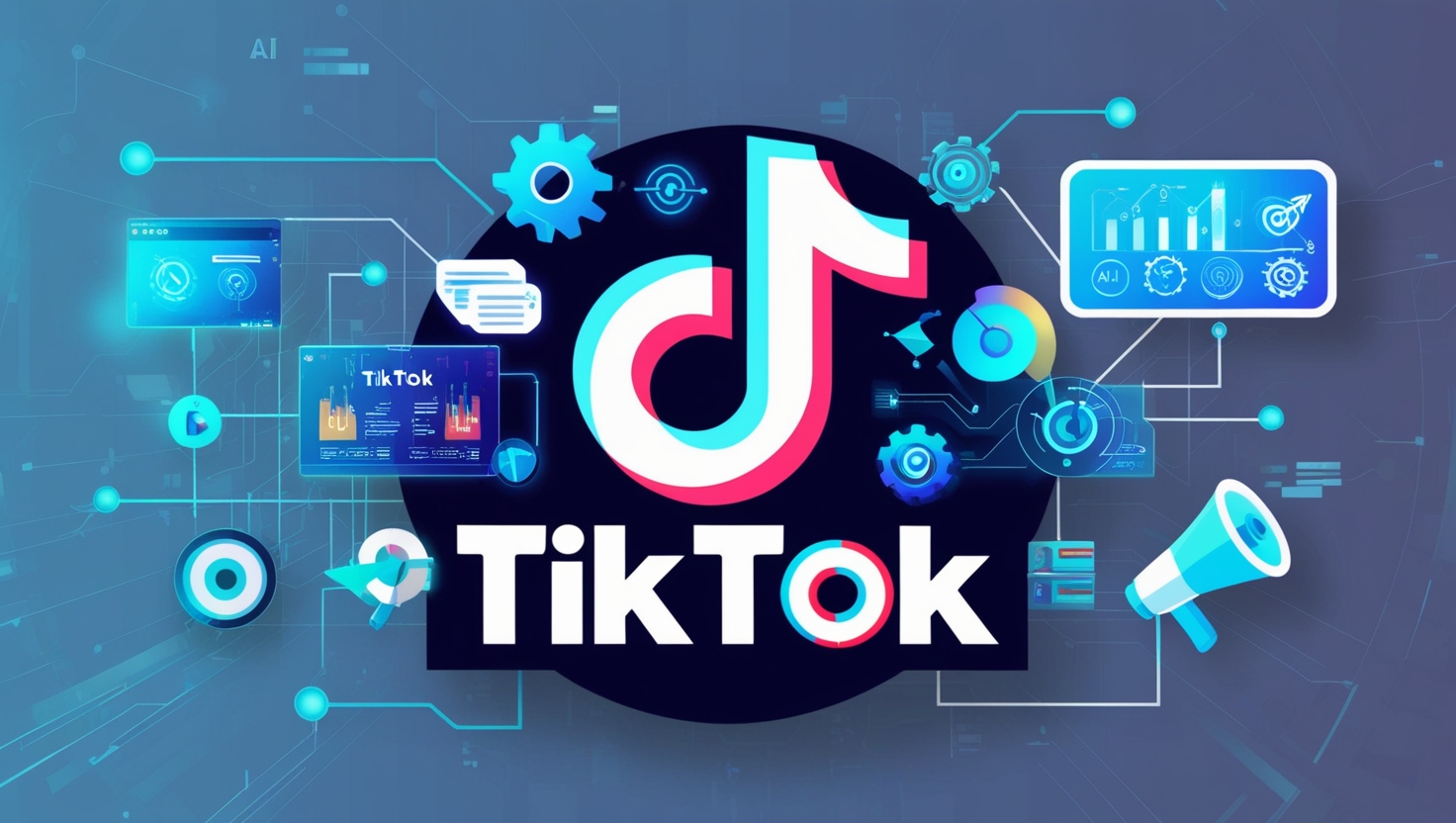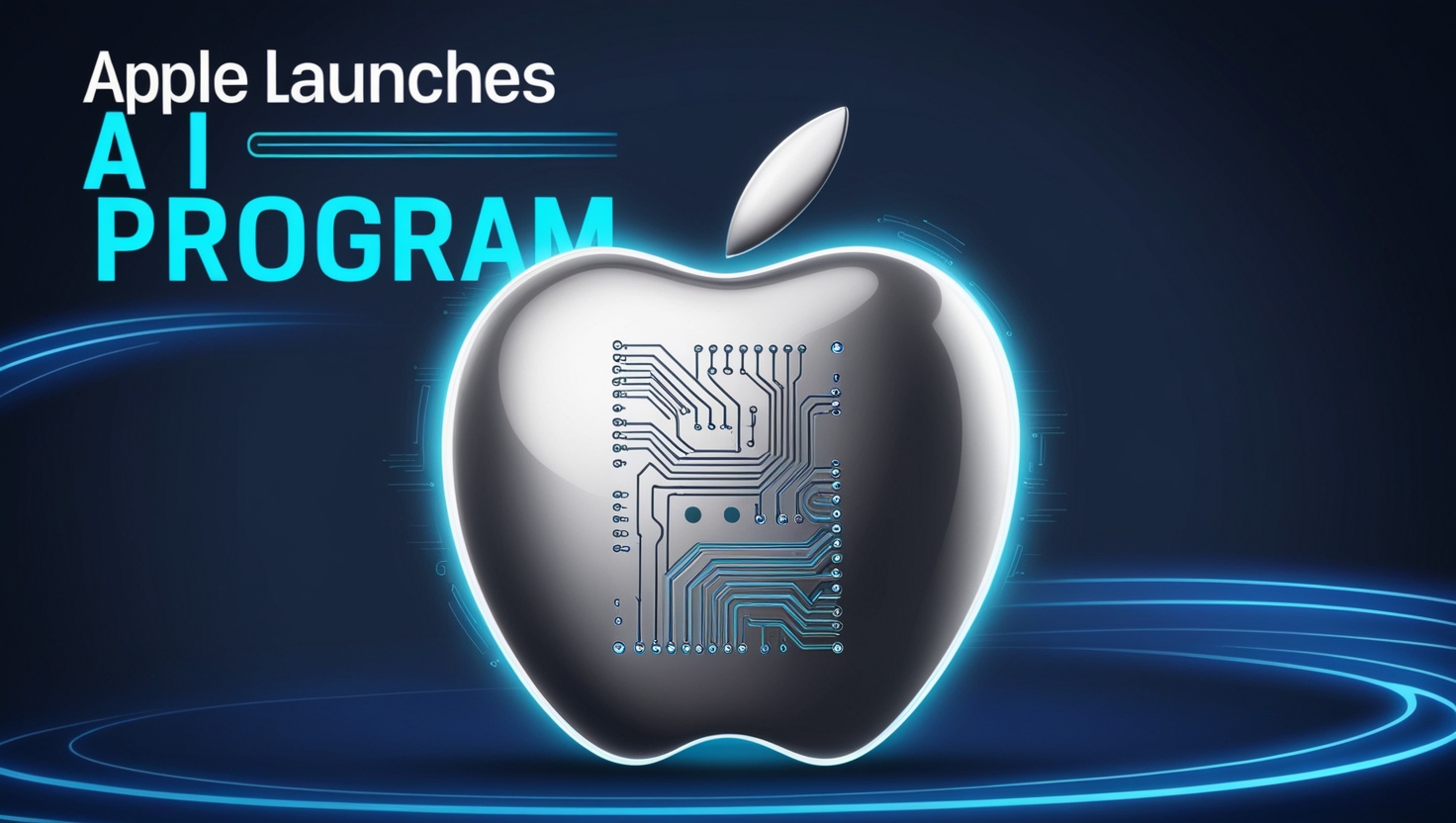AI Trends & Innovations
Microsoft’s New AI Tools is Here to Boost Productivity with Copilot Wave 2

Microsoft (MSFT) is making significant strides in enhancing its productivity software by integrating advanced artificial intelligence (AI) capabilities. This initiative, part of the company’s Copilot Wave 2 strategy, aims to transform how users interact with Microsoft 365 applications, including Word, Excel, PowerPoint, Outlook, and Teams. By embedding AI tools into these widely used platforms, Microsoft seeks to streamline workflows and improve overall productivity while capitalizing on its substantial investments in AI technology.

What’s new Features and Functionalities
- Copilot Pages: One of the standout features introduced is Copilot Pages, a collaborative tool that allows teams to interact with AI in real-time. This feature serves as a persistent canvas where users can access and modify content from various sources, facilitating seamless collaboration across projects.
- Enhanced Email Management: In Outlook, the new Prioritize My Inbox feature categorizes emails based on relevance and user interactions. This functionality helps users manage their inboxes more effectively by summarizing important messages and identifying key topics.
- Advanced Data Analysis in Excel: Microsoft has also integrated Copilot with Python in Excel, enabling users to perform complex data analyses without needing extensive coding knowledge. This enhancement allows for more sophisticated data manipulation and reporting.
- PowerPoint Presentation Tools: The Copilot in PowerPoint now includes a Narrative Builder, which assists users in creating structured outlines that can be easily transformed into polished presentations. This feature also ensures that branding remains consistent across all slides.
- Meeting Summaries in Teams: For Teams users, Copilot analyzes conversations from meetings—both spoken and written—to provide comprehensive summaries. It identifies key points and unanswered questions, ensuring that team members stay informed and engaged.
Impact on Productivity
The integration of these AI-driven tools is already showing promising results. Reports indicate that approximately 70% of Copilot users have experienced increased productivity, with many noting they can complete tasks faster than before. Users have highlighted significant time savings in managing emails and generating content, with some claiming up to three hours saved per week.
Moreover, the adoption rate of Copilot has surged dramatically, with a reported increase of over 60% in clients utilizing the tool within just one quarter. Major corporations like Vodafone are implementing Copilot for their employees, further validating its effectiveness in enhancing workplace efficiency.
As Microsoft continues to innovate within its productivity suite, it remains focused on leveraging AI to meet the evolving needs of businesses. The company’s approach not only aims to improve individual productivity but also fosters a culture of collaboration and creativity among teams.
By automating mundane tasks and providing intelligent insights, Microsoft is positioning itself as a leader in the AI-driven productivity landscape. Microsoft’s ongoing integration of AI technologies into its productivity software marks a pivotal shift in how organizations operate. As these tools become more sophisticated and widely adopted, they promise to redefine workplace efficiency and collaboration for years to come.
AI Trends & Innovations
Three Ways TikTok’s Smart+ is Transforming Digital Marketing (and Saving You Time)

TikTok, the global video-sharing sensation, has unveiled Smart+, a groundbreaking advertising platform designed to redefine the landscape of digital marketing. This innovative tool leverages the power of artificial intelligence (AI) to streamline and optimize advertising campaigns, offering businesses a more efficient and effective way to connect with their target audiences.
Smart+ represents a significant leap forward, promising to dramatically simplify the complexities of campaign management while significantly boosting return on ad spend (ROAS).
Beyond Automation: Intelligent Campaign Management
Smart+ transcends simple automation; it provides genuinely intelligent campaign management. Instead of merely automating repetitive tasks, it uses sophisticated AI algorithms to analyze vast quantities of data – user behavior, demographics, trends, and more – to make strategic decisions in real-time. This means that instead of marketers manually adjusting bids, targeting parameters, and creative assets, Smart+ continuously optimizes these elements based on ongoing performance data.
This dynamic approach ensures campaigns remain highly relevant and effective throughout their lifespan, maximizing reach and minimizing wasted ad spend.
Three Pillars of Smart+: A Synergistic Approach
The platform’s power stems from its three core pillars working in harmony:
- AI-Powered Creative Generation: Smart+ goes beyond simply offering various ad formats. It employs advanced AI to generate entirely new creative assets, tailoring them to specific audience segments. This means multiple variations of an ad can be produced quickly, each designed to resonate with unique viewer profiles.
The AI analyzes successful past campaigns and emerging trends to create highly targeted and engaging visuals and copy, significantly increasing the likelihood of positive engagement. This also allows for rapid A/B testing, enabling swift identification of the most effective creative approaches. - Precision Audience Targeting: Traditional targeting methods often fall short, leading to inefficient ad spending. Smart+ leverages AI to pinpoint the most receptive audiences with unparalleled accuracy. It doesn’t just rely on basic demographics; it analyzes user behavior, interests, and even subtle online cues to identify individuals most likely to convert.
This hyper-targeted approach dramatically improves campaign relevance, resulting in higher click-through rates, engagement, and ultimately, conversions. - Dynamic Bid Optimization: Smart+ continuously monitors campaign performance and automatically adjusts bids to maximize ROAS. It considers factors such as audience engagement, competition, and real-time bidding dynamics to optimize each ad impression.
This intelligent bidding strategy ensures that the budget is allocated strategically, focusing on high-performing segments and avoiding wasted spend on less effective placements. The algorithm learns and adapts constantly, refining its bidding strategy over time for continuous improvement.
Addressing Industry Challenges: A Holistic Solution
Smart+ directly addresses many of the pain points commonly experienced in digital advertising:
- Time Constraints: Manually managing campaigns is incredibly time-consuming. Smart+ frees up marketers’ time, allowing them to focus on strategic initiatives instead of tedious, repetitive tasks.
- Resource Limitations: Smaller businesses often lack the resources for extensive A/B testing and campaign optimization. Smart+ democratizes access to advanced advertising techniques, making sophisticated strategies attainable for organizations of all sizes.
- Inconsistent Performance: Traditional campaigns often experience fluctuations in performance. Smart+’s real-time optimization ensures consistent results, regardless of daily or weekly variations in user behavior.
- Difficulty Measuring ROI: Accurately tracking return on investment (ROI) can be complex. Smart+ provides comprehensive data and analytics, offering clear insights into campaign effectiveness and facilitating precise ROI measurement.
The Future of Advertising: AI-Driven Innovation
Smart+ is more than just a new advertising platform; it represents a fundamental shift in how businesses approach digital marketing. It leverages the transformative power of AI to automate, optimize, and personalize advertising, creating a more efficient, effective, and ultimately, rewarding experience for both advertisers and consumers.
While challenges remain regarding data privacy and algorithmic transparency, the potential for Smart+ to revolutionize the industry is undeniable. As AI continues to evolve, platforms like Smart+ will likely become even more sophisticated, leading to a new era of personalized and highly effective digital advertising.
The implications for businesses, marketers, and consumers alike are profound, signaling a future where technology empowers more effective and impactful marketing campaigns.
AI Trends & Innovations
Apple’s New AI Program Will Transform Your iPhone Experience — Here’s How!

Apple Inc. (AAPL) is set to unveil its highly anticipated AI program, aptly named “Apple Intelligence,” starting with a software update for its new iPhone 16 lineup on Monday, October 28. This initiative, as detailed in a recent Bloomberg report, exemplifies Apple’s commitment to enhancing user experience by leveraging the power of artificial intelligence. With Apple Intelligence, the tech giant aims to integrate smart features across its devices, fundamentally transforming how users interact with their technology.
The Arrival of Apple Intelligence
Apple Intelligence is envisioned as a comprehensive enhancement to the Apple ecosystem, infusing devices with advanced AI capabilities. This move follows a series of strategic investments and research initiatives focusing on machine learning, natural language processing, and generative AI. Historically, Apple has maintained its reputation as a leader in innovation, but this leap into the AI realm marks a significant evolution in its approach to user engagement and technology design.
Starting with the iPhone 16 series, Apple plans to roll out its AI features as part of a broader software update to iOS 18.1, iPadOS 18.1, and macOS Sequoia 15.1. This rollout will not only enhance existing functionalities but also introduce new capabilities that promise to make Apple devices more intuitive and personalized.
Key Features of Apple Intelligence
Apple Intelligence aims to deliver a suite of new features that breathe new life into everyday tasks and operations. Here are some of the standout capabilities expected to be included in this rollout:
1. Smart Writing Tools
Apple Intelligence will introduce advanced writing tools, allowing users to refine their writing across all applications. Whether composing emails, taking notes, or drafting documents, users will benefit from:
- Proofreading and Editing: The AI will suggest improvements in grammar and style, ensuring polished communication.
- Summarization: Users can condense lengthy texts into succinct summaries, making information more accessible and easier to digest.
- Contextual Rewrites: The AI will offer alternate phrasing to enhance clarity or tone, catering to the user’s specific audience and intent.
2. Personalized Notifications Management
In a world bombarded by digital notifications, Apple Intelligence aims to streamline user interactions with alerts. Key features will include:
- Priority Notifications: The AI will analyze incoming messages and highlight the most pertinent ones, helping users focus on what truly matters.
- Summarized Alerts: Instead of viewing every notification in detail, users will receive concise summaries that convey essential information at a glance.
- Contextual Understanding: By learning user preferences, the AI will adapt notifications based on individual habits and needs, minimizing distractions.
3. Enhanced Siri Functionality
The introduction of Apple Intelligence will significantly enhance Siri’s capabilities. Users can expect:
- Natural Language Processing: Siri will better understand conversational nuances, allowing for smoother interactions. Users can now communicate with Siri as if speaking to a human.
- Contextual Awareness: Siri will learn from previous interactions, offering more relevant suggestions. If a user frequently asks about weather updates or news at specific times, Siri will proactively provide this information.
- Cross-App Actions: Siri will be able to perform tasks that span multiple applications. For example, users could say, “Send an email to John about our dinner plans tonight,” and Siri would cross-reference contacts, schedule, and email communications.
4. Innovative Multimedia Management
Apple Intelligence will transform how users engage with multimedia content, particularly images and videos. Key features include:
- Content Creation: Users can create photo albums, memories, or videos simply by typing a description. The AI will compile the best images and moments into a cohesive presentation.
- Photo Enhancement Tools: Advanced AI algorithms will allow users to edit pictures by removing unwanted objects or enhancing specific parts of an image without compromising overall quality.
- Smart Search Functionality: The AI will enable users to conduct detailed searches for photos by describing the image or content, making finding specific memories quicker and easier.
5. Streamlined Notes and Audio Management
With Apple Intelligence, the Notes and Voice Memo applications will become more powerful:
- Audio Transcription: Conversations recorded on the phone will be transcribed automatically, allowing users to refer back without manually sifting through recordings.
- Summarized Transcripts: Post-recording, users will receive summaries of key points that emerged during discussions, aiding in effective decision-making and recall.
- Visual Integration: Users will be able to merge text notes with related audio recordings, creating richer, more informative entries.
6. Privacy-Centric AI Solutions
Apple has reiterated its commitment to privacy with the introduction of Apple Intelligence. Essential features related to privacy include:
- On-Device Processing: To minimize vulnerabilities associated with cloud data storage, much of the AI processing will occur on the device itself, ensuring that sensitive information remains secure.
- Transparent AI Usage: Users will have direct control over which data is utilized to improve their experience. Transparency will be a core tenet of Apple’s approach to AI.
- Independent Data Oversight: Apple has committed to ensuring that its AI systems are free from bias and misuse, emphasizing the importance of ethical AI deployment.
Broader Implications for Apple’s Ecosystem
The launch of Apple Intelligence is expected to ripple throughout Apple’s entire ecosystem. The integration of AI capabilities will position Apple products not only as devices for communication and productivity but also as indispensable tools powered by personalized intelligence.
Enhancing the Apple Ecosystem
As Apple Intelligence rolls out across iPhones, iPads, and Macs, users can anticipate a more cohesive experience. For instance:
- Cross-Device Functionality: Users will be able to initiate a task on their iPhone and continue seamlessly on their iPad or Mac, thanks to the AI’s awareness of the user’s interactive history.
- Interconnected Applications: Applications such as Mail, Photos, and Calendar will work in tandem, providing holistic insights that align with the user’s routines and goals.
Advancing Apple’s Competitive Edge
In an increasingly competitive marketplace, the introduction of Apple Intelligence is a strategic move to differentiate Apple from rivals such as Google and Microsoft. By embedding cutting-edge AI capabilities into its devices, Apple is reinforcing its reputation for innovation, maintaining user loyalty, and attracting new consumers who prioritize intuitive technology.
Potential Challenges and Considerations
While the prospects of Apple Intelligence are exciting, there are notable challenges that Apple must navigate:
Integration Complexity
Successfully integrating sophisticated AI features across a diverse range of applications requires meticulous planning and execution. Apple will need to ensure that these enhancements are smooth to avoid disruption in users’ habitual engagement with their devices.
User Education and Adaptation
The introduction of AI-driven functionalities will necessitate user education. Apple will need to effectively communicate how these new features work and why they are beneficial, ensuring users feel confident in utilizing them.
Ethical Considerations in AI
With the growing concerns surrounding ethical AI usage, Apple must address issues related to data usage, misinformation generated by AI systems, and algorithmic bias. Upholding ethical standards while implementing advanced technology is paramount for maintaining public trust.
Conclusion
Apple’s forthcoming launch of Apple Intelligence represents a watershed moment in its history. By integrating AI capabilities into its products, Apple aims to redefine user interaction in a manner that promotes efficiency, personalization, and privacy.
As the rollout date approaches on October 28, both Apple enthusiasts and the wider technology community eagerly await the unveiling of new features designed to enhance daily life. Apple Intelligence is poised to create a more intuitive ecosystem that not only meets but anticipates user needs, reaffirming Apple’s role as a pioneering force in technological innovation.
AI Trends & Innovations
From Sand to Silicon: The US-UAE Alliance – Pioneering Safe and Ethical AI

In an era where artificial intelligence (AI) is reshaping industries and societies, the collaboration between the United States and the United Arab Emirates (UAE) stands out as a significant partnership aimed at leveraging AI for economic growth, innovation, and societal benefit. This cooperation reflects a shared vision of harnessing technology to address global challenges while promoting sustainable development and ethical practices.
Historical Context
The relationship between the United States and the UAE has evolved significantly over the past few decades. Established in 1971, diplomatic ties have grown stronger as both nations have recognized the importance of collaboration in various fields, including trade, security, and technology.
The UAE has emerged as a regional leader in technological innovation, driven by its ambitious Vision 2021 and subsequent Vision 2071 initiatives aimed at diversifying its economy away from oil dependency.
Recognizing the transformative potential of AI, the UAE appointed its first Minister of State for Artificial Intelligence in 2017. This move signaled a commitment to becoming a global hub for AI research and development. The United States, with its rich ecosystem of tech companies and research institutions, provides an ideal partner for the UAE in this endeavor.
Framework for Cooperation
The formalization of cooperation between the two nations was underscored by a significant meeting between President Joe Biden and President Sheikh Mohamed bin Zayed Al Nahyan in September 2024. During this meeting, both leaders endorsed a framework titled “Common Principles for Cooperation on AI.” This framework outlines several key areas of collaboration:
- Ethical AI Development: Both countries are committed to developing AI technologies that prioritize ethical considerations. This includes addressing issues such as bias in algorithms, ensuring transparency in AI decision-making processes, and safeguarding individual privacy rights.
- Regulatory Alignment: To foster innovation while maintaining security and ethical standards, the US and UAE aim to align their regulatory frameworks. This alignment will facilitate smoother operations for businesses engaged in AI development across both nations.
- Cybersecurity Initiatives: Recognizing the vulnerabilities associated with AI technologies, both countries emphasize cooperation on cybersecurity measures. This includes sharing best practices to protect AI systems from cyber threats and ensuring resilience against potential attacks.
- Investment in Talent Development: A crucial aspect of this partnership is the focus on education and training. Joint initiatives will be established to cultivate a skilled workforce capable of driving AI innovation. Programs will target researchers, engineers, and policymakers from both nations.
- Sustainable Development Goals: The partnership also aims to leverage AI to address pressing global challenges such as climate change, healthcare access, and food security. By integrating AI solutions into sustainable development efforts, both countries hope to make a positive impact on emerging economies.
Economic Implications
The economic implications of US-UAE cooperation on AI are profound. As both nations seek to capitalize on the economic potential of AI technologies, they recognize that collaboration can lead to significant advancements across various sectors.For instance, the healthcare sector stands to benefit immensely from AI applications such as predictive analytics for patient care, personalized medicine, and efficient resource management. By sharing knowledge and expertise in these areas, both countries can enhance their healthcare systems while improving patient outcomes.
Moreover, sectors like transportation are also poised for transformation through AI-driven innovations such as autonomous vehicles and smart logistics solutions. The integration of these technologies can lead to increased efficiency, reduced costs, and improved safety standards.
The UAE’s strategic investments in technology provide an attractive landscape for American companies looking to expand their operations in the Middle East. Simultaneously, US firms can benefit from access to the UAE’s growing market and its status as a gateway to other regional markets.
Geopolitical Considerations
The geopolitical landscape surrounding AI development is complex. As nations race to establish themselves as leaders in this critical field, cooperation among allies becomes essential. The US-UAE partnership serves not only economic interests but also strategic security concerns. Both countries face challenges from global competitors investing heavily in AI technologies.
By collaborating on research initiatives and sharing intelligence related to emerging technologies, they can strengthen their positions against these competitors while fostering stability in their respective regions.Furthermore, as concerns about data privacy and cybersecurity grow globally, joint efforts between the US and UAE can set a benchmark for international standards regarding ethical AI use. Their cooperation may inspire other nations to adopt similar frameworks that prioritize ethical considerations alongside technological advancement.
Future Directions
Looking ahead, the potential for deeper cooperation between the United States and UAE on artificial intelligence is vast. Both nations are exploring avenues for formalizing their partnership through government-to-government agreements that outline specific commitments related to research funding, talent exchange programs, and collaborative projects.One exciting prospect is the establishment of joint research hubs focused on cutting-edge AI technologies such as machine learning algorithms or natural language processing systems.
These hubs could serve as incubators for innovative ideas while attracting top talent from around the world.Additionally, there is significant potential for collaboration in space exploration initiatives that utilize AI technologies for data analysis or autonomous operations. As both countries continue to invest in their respective space programs—NASA’s Artemis missions from the US and the UAE’s Mars mission—AI could play a critical role in enhancing capabilities across these endeavors.
Conclusion
The cooperation between the United States and the United Arab Emirates on artificial intelligence represents a forward-looking partnership with far-reaching implications for both nations and beyond. By focusing on ethical practices, regulatory alignment, talent development initiatives, cybersecurity measures, and sustainable development goals, they are poised to lead globally in shaping responsible AI use.
As they navigate this transformative landscape together—addressing challenges while seizing opportunities—the US-UAE partnership serves not only as a model for bilateral relations but also as an example of how countries can collaborate effectively to harness technology for societal good. In doing so, they pave the way for a future where artificial intelligence enhances lives while respecting fundamental human values.
-

 AI Trends & Innovations6 months ago
AI Trends & Innovations6 months agoApple and Nvidia Set to Invest in OpenAI’s Next Funding Round
-

 AI Trends & Innovations6 months ago
AI Trends & Innovations6 months agoOpenAI’s Sutskever Lands $1 Billion for New AI Safety Startup SSI
-

 Smart Technologies6 months ago
Smart Technologies6 months agoSamsung Unveils One UI 6.1.1 with Cutting-Edge Galaxy AI Features
-

 AI Trends & Innovations6 months ago
AI Trends & Innovations6 months agoSay Goodbye to AI Copycats: YouTube Launches New Protection Tools for Creators!
-

 AI Trends & Innovations6 months ago
AI Trends & Innovations6 months agoThe Power Players of AI: TIME Reveals Its 2024 TIME100 List of Influential Innovators
-

 AI Trends & Innovations6 months ago
AI Trends & Innovations6 months agoAI Meets Medicine: Eli Lilly and Genetic Leap Join Forces to Transform RNA Therapies
-

 AI Trends & Innovations5 months ago
AI Trends & Innovations5 months agoOpenAI’s o1 Models Redefine AI with PhD-Level Performance
-

 AI Trends & Innovations6 months ago
AI Trends & Innovations6 months agoOprah Winfrey to Host Groundbreaking AI Special: “AI and the Future of Us”




Pingback: The Power Players Of AI: TIME Reveals Its 2024 TIME100 List Of Influential Innovators » Dailyaiinsider.com